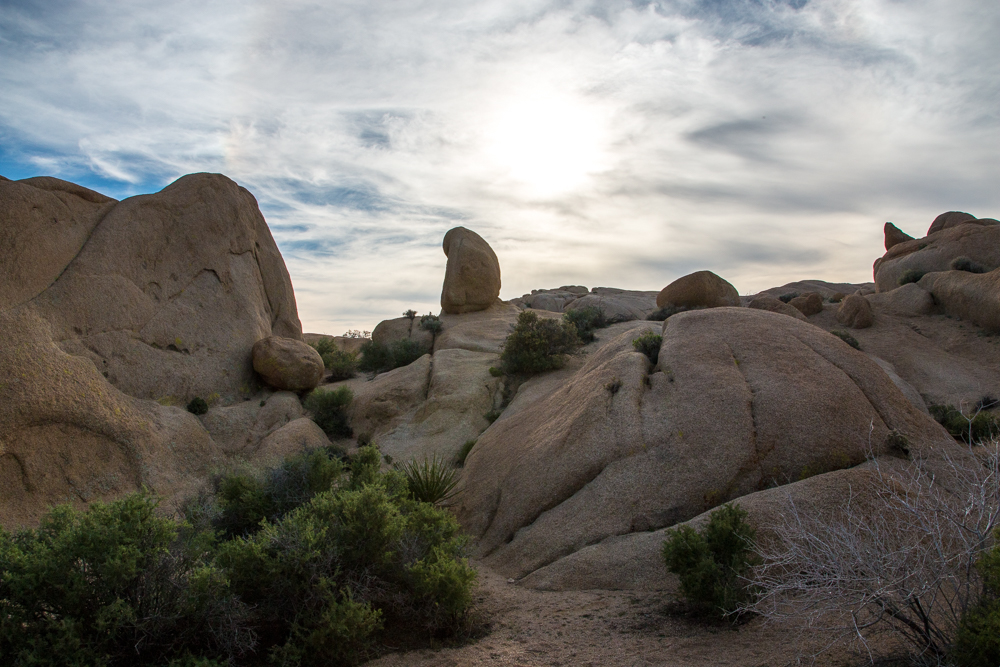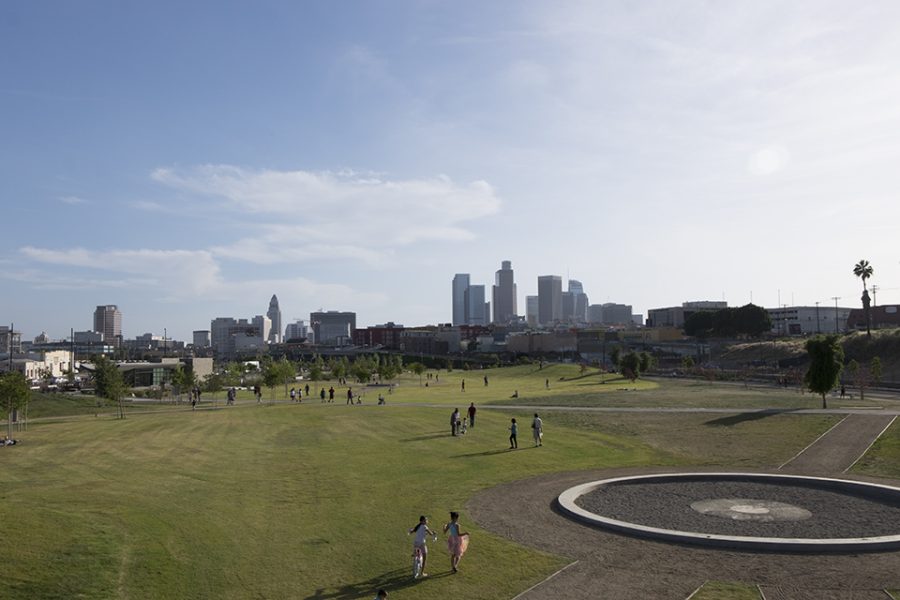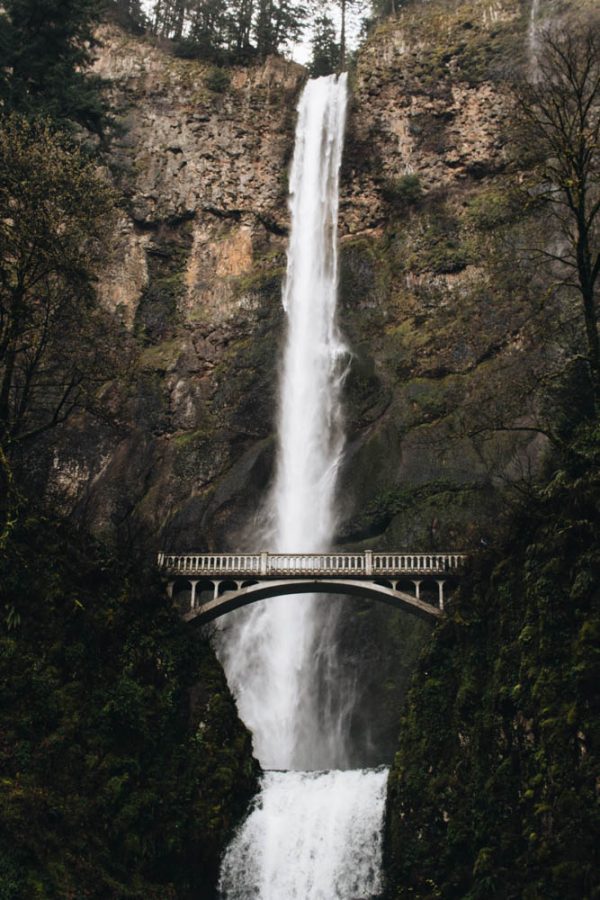In the spirit of roadtripping, ditch Los Angeles County and head two hours east from Biola on I-10 while blasting U2’s “The Joshua Tree.” Exit I-10 on to Twentynine Palms Hwy 62, which traces the western and northern perimeter of Joshua Tree National Park. From this highway, the park is accessible through two entrances, each marked by a dusty, throwback desert town complete with friendly locals and 70s style dining opportunities.
Visitor Centers located at each entrance offer information about many aspects of the park’s geography, flora and fauna. Whether you plan on hiking, biking, climbing or bouldering, be sure to get ahold of a map featuring recreation opportunities. A $15, seven-day access pass must be purchased for each vehicle entering the park.
The city of Joshua Tree is located about 40 miles from the exit, with Twentynine Palms about 30 miles further. The Joshua Tree entrance is called Park Blvd., and leads to the popular Jumbo Rocks Campground before intersecting with Utah Trail, the turnoff from Twentynine Palms. The two roads combine to form Pinto Basin Rd. winding through the entire park and completing the loop back at I-10, which follows the southern perimeter of the park. Cruising the length of Joshua Tree allows visitors to bask in the unique beauty displayed in its rugged landscape. Although the loop takes several hours, experiencing the park in old-school road trip fashion is worth the extra gas money.
Overnight camping is available at nine different campgrounds located at various elevations from 3,000 to 4,500 ft. The sites do not require reservations, but most are only available at a first-come, first-serve basis and include a $10 or $15 fee. For more information about individual sites, check out the National Parks webpage.
Be sure to check weather conditions while preparing for an overnight trip in Joshua Tree, where extreme changes in temperature are common. High elevation lends to cooler temperatures, especially at night, but expect hot daytime conditions. Bring plenty of water and sun protection.
Joshua Tree National Park covers 794,000 acres of protected land, a combination of two desert ecosystems — the Mojave Desert and the Colorado Desert. Elevation is the primary distinction between what are considered “high” and “low” contrasting deserts, and also affects where different types of plants flourish. The iconic, unruly Joshua Tree is found in the western part of the park, the Mojave Desert. This desert is characterized by elevations above 3,000 ft. that allow for slightly cooler temperatures and more moisture. The eastern half of the park sits below 3,000 ft., making up the Colorado Desert, which is part of the Sonoran Desert.
Springtime is an excellent time to visit Joshua Tree, when blooming trees, wildflowers and ocotillo plants color the dry landscape. Park rangers frequently update reports of when wildflowers can be seen blooming. Desert habitat is also home to many types of wildlife. Ground squirrels, lizards and many types of birds may be seen during the day. The National Park service recommends dusk and dawn as the best times to glimpse wildlife, including nocturnal species like snakes, coyotes, bighorn sheep and black-tailed jackrabbits.
Alongside the natural diversity of this park, the region is further enriched by the eclectic legacy of people who have migrated to and through its surreal landscape. The National Park service reports that indigenous peoples first inhabited the land 5,000 years ago, the Pinto Indians, followed by the Cahuilla, Chemehuevi and Serrano cultures whose populations persisted in the region until the 1900s. Cattlemen in the 1800s began pasturing their livestock on the grassland, followed by a period of prosperous mining involving the construction of tunnels and roads in search of gold. Homesteaders developed their claims with homes, wells and cultivated the land until the area became a national monument in 1936, and a national park in 1994. Film sets began popping up in the 1950s as the park provided a scenic background for horror and western flicks, and influenced musicians and artists throughout the decades who went to expand their consciousness with mind-altering experiences. Some even reported UFO sightings.
Robust efforts to protect the region through the years have helped sustain it, but it is important to remember the impact human traffic has on this delicate ecosystem. The Leave No Trace Center for Outdoor Ethics program is widely promoted throughout the National Park Service, and outlines seven simple practices visitors can follow, ensuring the beauty and health of this region are maintained for generations to come.










